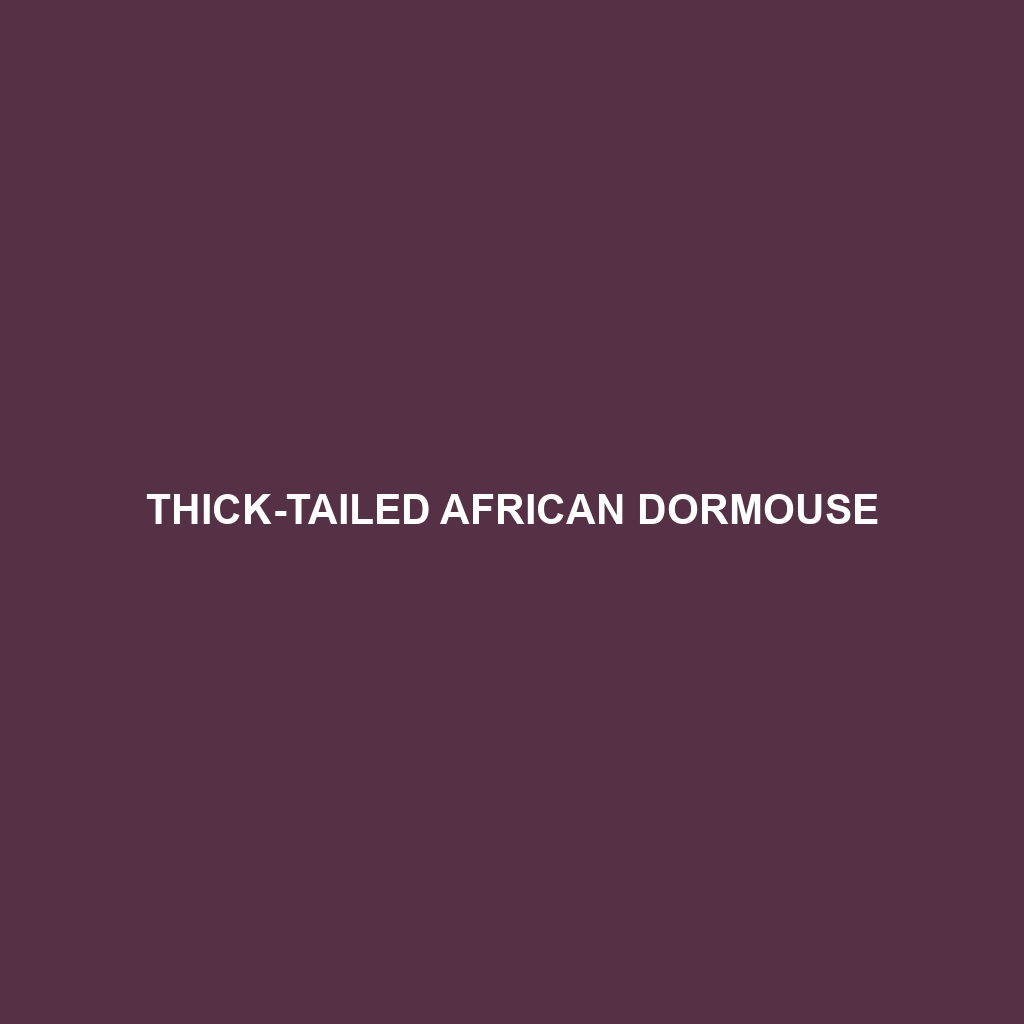Thick-tailed African Dormouse (Scientific Name: )
Common Name: Thick-tailed African Dormouse
Scientific Name:
Habitat
The Thick-tailed African Dormouse is primarily found in the southern regions of Africa, particularly in countries such as South Africa, Namibia, and Botswana. This species thrives in diverse habitats, including savannas, bushveld, and woodland areas, favoring environments with thick underbrush for shelter and nesting. These dormice can often be spotted in regions that provide abundant food sources and suitable cover from predators.
Physical Characteristics
The Thick-tailed African Dormouse is a small rodent, typically measuring between 10 to 14 centimeters in body length, with a tail that can extend just as long. This species has a distinctive thick, bushy tail which it uses for balance and warmth. Its fur is predominantly light brown or grayish, with a paler underside, allowing it to blend seamlessly with its surroundings. Notable features include large, expressive eyes and rounded ears, which contribute to its adorable appearance and enhance its nocturnal vision.
Behavior
Thick-tailed African Dormice are known for their arboreal lifestyle, spending much of their time in trees and shrubs. They exhibit a nocturnal pattern of activity, foraging for food at night and retreating to their nests during the day. These dormice are social creatures, often seen in family groups or pairs, and are known for their playful behavior, which can include climbing, jumping, and grooming each other. Their agility and curiosity make them fascinating to observe in the wild.
Diet
The diet of the Thick-tailed African Dormouse primarily consists of fruits, nuts, seeds, and insects. These rodents are particularly fond of seeds from a variety of plants, which constitutes a significant portion of their nutritional intake. During the dry season, their foraging habits may lead them to scavenge for more diverse food sources, demonstrating their adaptability to changing environments.
Reproduction
Reproductive behavior in Thick-tailed African Dormice typically occurs in the spring to early summer months, coinciding with increased food availability. Females usually produce 2 to 4 offspring per litter, which are born altricial (underdeveloped) and require care for several weeks. Parent dormice invest considerable time in nurturing their young, with both males and females participating in their upbringing. Mating rituals may include playful chasing and grooming, establishing strong pair bonds.
Conservation Status
The conservation status of the Thick-tailed African Dormouse is currently listed as “Least Concern” according to the IUCN Red List; however, habitat destruction and human encroachment pose potential threats to its population. Conservation efforts are essential to monitor habitats and ensure this species remains stable in its environment.
Interesting Facts
Did you know that the Thick-tailed African Dormouse can store food for future consumption? These animals are known for their exceptional memory, allowing them to hide and later recover food supplies. Additionally, they are skilled climbers, often descending headfirst from trees, showcasing their remarkable agility.
Role in Ecosystem
The Thick-tailed African Dormouse plays a significant role in its ecosystem, primarily as both a seed disperser and a prey species. By feeding on a variety of seeds, they aid in plant propagation, contributing to the health of their habitats. Furthermore, as a food source for larger predators, including birds of prey and small mammals, they occupy a crucial position within the food web, supporting biodiversity and ecological balance.
